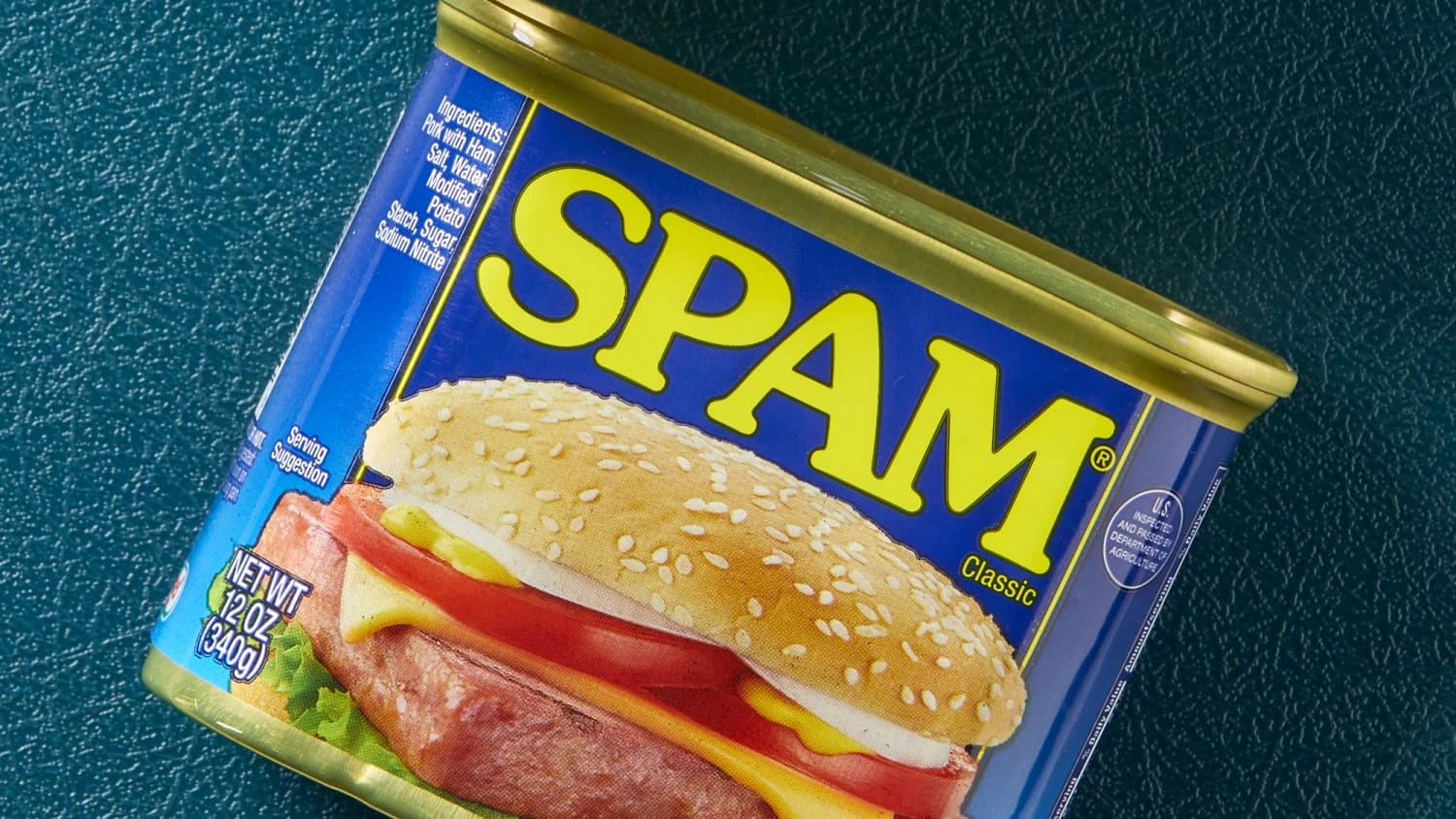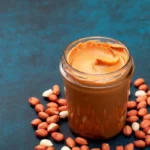
Spam is a canned meat made primarily from pork, along with ingredients like salt, water, and preservatives. Introduced by Hormel Foods in 1937, it became especially popular during World War II due to its long shelf life and versatility. Spam can be prepared in various ways, such as frying, baking, or grilling, and is commonly used in a range of dishes, from sandwiches to casseroles. It has also become a cultural staple in certain regions, particularly in Hawaii and some Asian countries, where it features prominently in traditional recipes.
Spam was first introduced in 1937 by Hormel Foods Corporation. Hormel Foods, founded by George A. Hormel in 1891, introduced Spam to the market as a convenient, shelf-stable meat product. The launch was part of a strategy to diversify Hormel’s offerings during the Great Depression when consumers were seeking affordable food options. Spam quickly gained traction due to its unique packaging and versatility, leading to its lasting presence in pantries around the world.
The name “Spam” is a combination of “spiced ham.” The name was derived from the product’s main ingredients, which included ham and a blend of spices. The branding was designed to be catchy and memorable, contributing to its recognition. Over the years, the name “Spam” has become synonymous with the product itself, transcending its original meaning and entering popular culture, particularly as a term for unsolicited digital communication.
Spam became popular during World War II due to its long shelf life and portability. During the war, fresh meat was often scarce, and soldiers needed reliable food sources that could withstand the rigors of transportation and storage. Spam’s canned form made it an ideal solution, as it could be shipped easily and stored for long periods without refrigeration. This practicality led to widespread consumption among troops and civilians alike, solidifying its reputation as a wartime staple.
The first Spam recipe book was published in 1940. Recognizing the growing popularity of Spam, Hormel Foods released a cookbook that featured a variety of recipes to inspire consumers. The book showcased the versatility of Spam, offering ideas for breakfast, lunch, and dinner options. This marketing strategy not only promoted the product but also encouraged creative cooking, helping Spam to become a household name in American cuisine.
Over 8 billion cans of Spam have been sold worldwide since its launch. This staggering number highlights Spam’s enduring popularity and its global reach. The product has found a place in various cultures, with unique adaptations and recipes emerging in different countries. The sales figures reflect not only consumer demand but also the brand’s ability to innovate and adapt to changing tastes over the decades.
Spam is available in over 40 countries, with unique flavors tailored to local tastes. Hormel Foods has successfully marketed Spam in diverse regions, adapting its flavors to suit local palates. For example, in the Philippines, Spam is often flavored with garlic or served with rice, while in South Korea, it may come in a spicy version. This localization strategy has helped Spam maintain its relevance and popularity across different cultures.
In South Korea, Spam is a popular ingredient in dishes like budae jjigae (army stew). Budae jjigae is a hearty stew that originated during the Korean War and combines Spam with various ingredients like noodles, kimchi, and tofu. The dish symbolizes resourcefulness and comfort, as it was created using available rations. Spam’s inclusion in this traditional dish showcases its integration into Korean cuisine and its significance as a beloved comfort food.
The original recipe of Spam contained pork shoulder, ham, salt, water, potato starch, and sodium nitrite. The formulation of Spam has remained fairly consistent over the years, contributing to its distinct taste and texture. The combination of pork shoulder and ham provides a rich flavor, while potato starch acts as a binder. Sodium nitrite is added for preservation and to maintain the meat’s pink color. This simple yet effective recipe has allowed Spam to stand the test of time.
Spam is often used in Hawaiian cuisine, including Spam musubi, a sushi-like snack. Spam musubi consists of a slice of Spam placed on top of rice and wrapped in seaweed. This dish reflects Hawaii’s multicultural influences, combining elements of Japanese sushi with local ingredients. Spam musubi has become a popular snack and is often found at convenience stores and local eateries, highlighting the unique culinary fusion present in Hawaiian culture.
The term “Spam” has also become synonymous with unsolicited emails. The use of “Spam” to describe unwanted digital communication originated in the 1990s, drawing a parallel to the overabundance of the canned meat product. Just as Spam can be found everywhere, unsolicited emails flooded inboxes, leading to the coining of the term. This linguistic evolution illustrates how a brand name can transcend its original context and become part of everyday language.
Hormel Foods produces over 12 varieties of Spam. Over the years, Hormel Foods has expanded its Spam product line to cater to diverse consumer preferences and dietary needs. Varieties include classic Spam, Spam Lite, and Spam with Bacon, among others. Each variant is designed to appeal to different tastes, with some focusing on lower sodium content or additional flavors, such as teriyaki and hickory smoke. This variety allows consumers to choose options that fit their lifestyles while still enjoying the convenience and taste of Spam.
Spam is a significant part of the diet in several Pacific Island nations. In many Pacific Island countries, Spam has become a staple food due to its long shelf life and ease of preparation. It is often used in traditional dishes, reflecting the cultural adaptation of this American product. In places like Guam and the Marshall Islands, Spam is featured in local cuisine, such as in fried rice or served with vegetables, showcasing how global products can integrate into regional diets and culinary traditions.
The first Spam commercial aired in 1940. Hormel Foods launched its first television advertisement for Spam in 1940, marking a significant moment in the company’s marketing history. The ad aimed to promote the convenience and versatility of Spam as a meal solution. This early use of television advertising helped establish Spam as a household name and contributed to its widespread acceptance and popularity among American consumers during a time when convenience foods were gaining traction.
Spam has been featured in various pop culture references, including movies and TV shows. Spam’s unique status has made it a subject of humor and nostalgia in popular culture. It has appeared in numerous films, television shows, and even songs, often used to evoke a sense of kitsch or to symbolize cheap, processed food. For example, the famous Monty Python sketch featuring Spam humorously highlights its prevalence and the absurdity of its overuse, cementing Spam’s place in the collective cultural consciousness.
In 2007, Spam was inducted into the National Inventors Hall of Fame. This honor recognizes Spam’s impact as a significant food innovation in American history. The induction acknowledges the ingenuity behind the development of Spam as a convenient, shelf-stable meat product that revolutionized the way people consumed protein, particularly during times of scarcity. This recognition highlights Spam’s cultural significance and its role in shaping food consumption patterns.
The iconic Spam can design has remained largely unchanged since 1937. The distinctive packaging of Spam, featuring a simple can with a blue and yellow label, has become instantly recognizable over the decades. The design’s consistency is a testament to its effective branding, as it evokes nostalgia while maintaining a sense of familiarity for consumers. This enduring design has contributed to Spam’s identity and market presence, allowing it to stand out on store shelves.
Spam is often cited as a comfort food by many consumers. For many people, Spam evokes feelings of nostalgia and comfort, often associated with family meals and home cooking. Its versatility allows it to be used in various recipes, from breakfast dishes to casseroles, making it a go-to ingredient for quick and satisfying meals. This emotional connection to food plays a significant role in Spam’s enduring popularity, as it continues to be a source of comfort for those who grew up with it.
The U.S. military used Spam in their rations during the Vietnam War. Due to its long shelf life and ease of preparation, Spam was included in military rations, providing soldiers with a reliable source of protein during the Vietnam War. Its presence in combat rations helped sustain troops in challenging conditions and contributed to its reputation as a wartime food. This association with the military further solidified Spam’s status as a staple in American culture.
Spam is gluten-free and has no added preservatives. As consumer preferences have shifted towards healthier and more natural food options, Hormel Foods has positioned Spam as a gluten-free product with no artificial preservatives. This shift caters to individuals with gluten sensitivities and those seeking minimally processed foods. By emphasizing these attributes, Spam appeals to a broader audience while maintaining its classic taste and convenience.
Hormel Foods has produced limited-edition flavors of Spam, including teriyaki and bacon. To keep the brand fresh and exciting, Hormel Foods has introduced various limited-edition flavors of Spam over the years. These unique offerings, such as Spam Teriyaki and Spam Bacon, are designed to attract adventurous eaters and those looking to try something new. The success of these limited editions demonstrates the brand’s ability to innovate while staying true to its roots, allowing Spam to remain relevant in a competitive food market.
Spam is a common ingredient in breakfast dishes in several countries. In various cultures around the world, Spam is frequently incorporated into breakfast menus due to its versatility and ease of preparation. In the United States, it may be served alongside eggs and toast, while in Hawaii, Spam is often featured in breakfast platters or as Spam musubi. In South Korea, it is commonly found in breakfast dishes, including fried rice or as part of a hearty brunch. Its ability to complement a range of flavors and ingredients makes Spam a popular choice for breakfast, catering to diverse culinary traditions.
In 2021, Spam celebrated its 84th anniversary. The year 2021 marked a significant milestone for Spam, as it celebrated 84 years since its introduction in 1937. This anniversary reflects not only the product’s longevity but also its ability to adapt to changing consumer tastes and preferences over the decades. Throughout its history, Spam has evolved from a wartime staple to a beloved comfort food enjoyed by millions worldwide. The anniversary serves as a reminder of Spam’s cultural significance and its place in the hearts of consumers across generations.
Spam’s popularity has led to annual Spam festivals in places like Austin, Minnesota, where Hormel is based. The city of Austin, Minnesota, hosts the annual Spam Jam festival, celebrating the iconic product and its cultural impact. This event typically features food vendors, cooking contests, and various activities centered around Spam, attracting fans from near and far. The festival not only highlights the culinary versatility of Spam but also fosters community spirit and pride in the local heritage associated with Hormel Foods, the company behind Spam. It serves as a fun and engaging way for people to connect over their shared love for the product.
The Spam Museum in Austin, Minnesota, showcases the history and cultural significance of Spam. The Spam Museum, located in Austin, offers visitors an interactive experience that delves into the history of Spam and its impact on American culture. Exhibits include the origins of Spam, its role during wartime, and its transformation into a global food phenomenon. The museum also features memorabilia, advertisements, and even a cooking demonstration area where visitors can sample Spam dishes. This educational venue highlights Spam’s unique place in culinary history and its influence on food trends, making it a popular attraction for tourists and locals alike.
Spam is often referenced in discussions about food security due to its long shelf life. Due to its canned form and preservation methods, Spam has a remarkably long shelf life, often lasting several years without refrigeration. This characteristic makes it a reliable food source during times of food scarcity or emergencies, which is why it is frequently included in disaster preparedness kits and military rations. Discussions about food security often highlight the importance of shelf-stable foods like Spam, as they can provide essential nutrition in situations where fresh food is unavailable. Spam’s role in food security underscores its significance beyond just being a convenience food; it serves as a practical solution for ensuring access to protein in various circumstances.
FAQs about SPAM (Food)
What is SPAM?
SPAM is a canned meat product made by Hormel Foods. It’s a precooked, spiced ham product that’s typically sliced and served cold or cooked. SPAM is known for its distinctive flavor and convenient packaging.
Where did SPAM originate?
SPAM was first introduced in 1937 as a canned meat product designed for easy storage and transportation. It gained popularity during World War II and has since become a global food staple.
What is SPAM made of?
SPAM is primarily made of pork shoulder meat, ham, water, salt, sugar, and spices. It also contains sodium nitrite, which is a preservative that gives SPAM its pink color.
Is SPAM healthy?
SPAM is generally considered a processed meat, which can be higher in sodium and saturated fat compared to leaner protein sources. However, it can be incorporated into a balanced diet in moderation.
What are some popular ways to eat SPAM?
There are countless ways to enjoy SPAM. Here are some popular methods:
- Fried: SPAM is often fried in a skillet until crispy.
- Grilled: Grilling SPAM can give it a smoky flavor.
- Baked: SPAM can be baked in the oven for a tender texture.
- Canned: SPAM can be eaten directly from the can, although it’s often heated up first.
What are some popular SPAM dishes?
SPAM is used in many dishes around the world. Here are a few examples:
- SPAM Musubi: A popular Hawaiian dish consisting of SPAM, rice, and seaweed.
- SPAM Fried Rice: A classic dish that combines SPAM with rice, vegetables, and eggs.
- SPAM Kimchi Stew: A Korean dish featuring SPAM, kimchi, and other ingredients.
- SPAM and Eggs: A simple and satisfying breakfast or brunch option.
Is SPAM safe to eat?
Yes, SPAM is safe to eat when handled and stored properly. However, it’s important to check the expiration date and avoid consuming it if it appears spoiled or has an unusual odor.
Can you freeze SPAM?
Yes, SPAM can be frozen for up to two months. To freeze SPAM, slice it into desired portions and wrap them tightly in plastic wrap or aluminum foil.
Is SPAM vegetarian or vegan?
No, SPAM is not vegetarian or vegan as it contains pork.
Are there any alternatives to SPAM?
There are several alternatives to SPAM, including other canned meats, tofu, and tempeh. These options may have different nutritional profiles and flavors.









